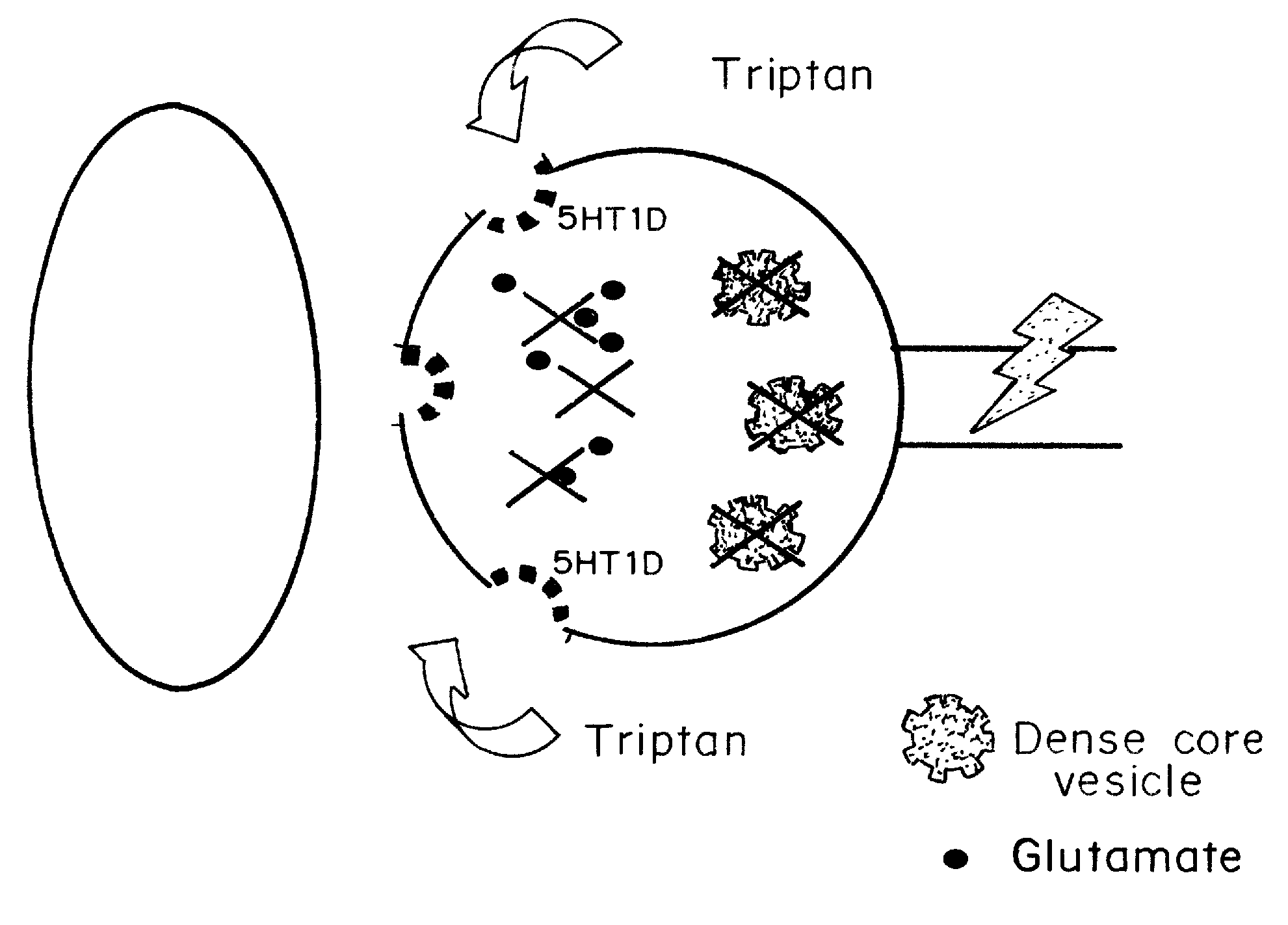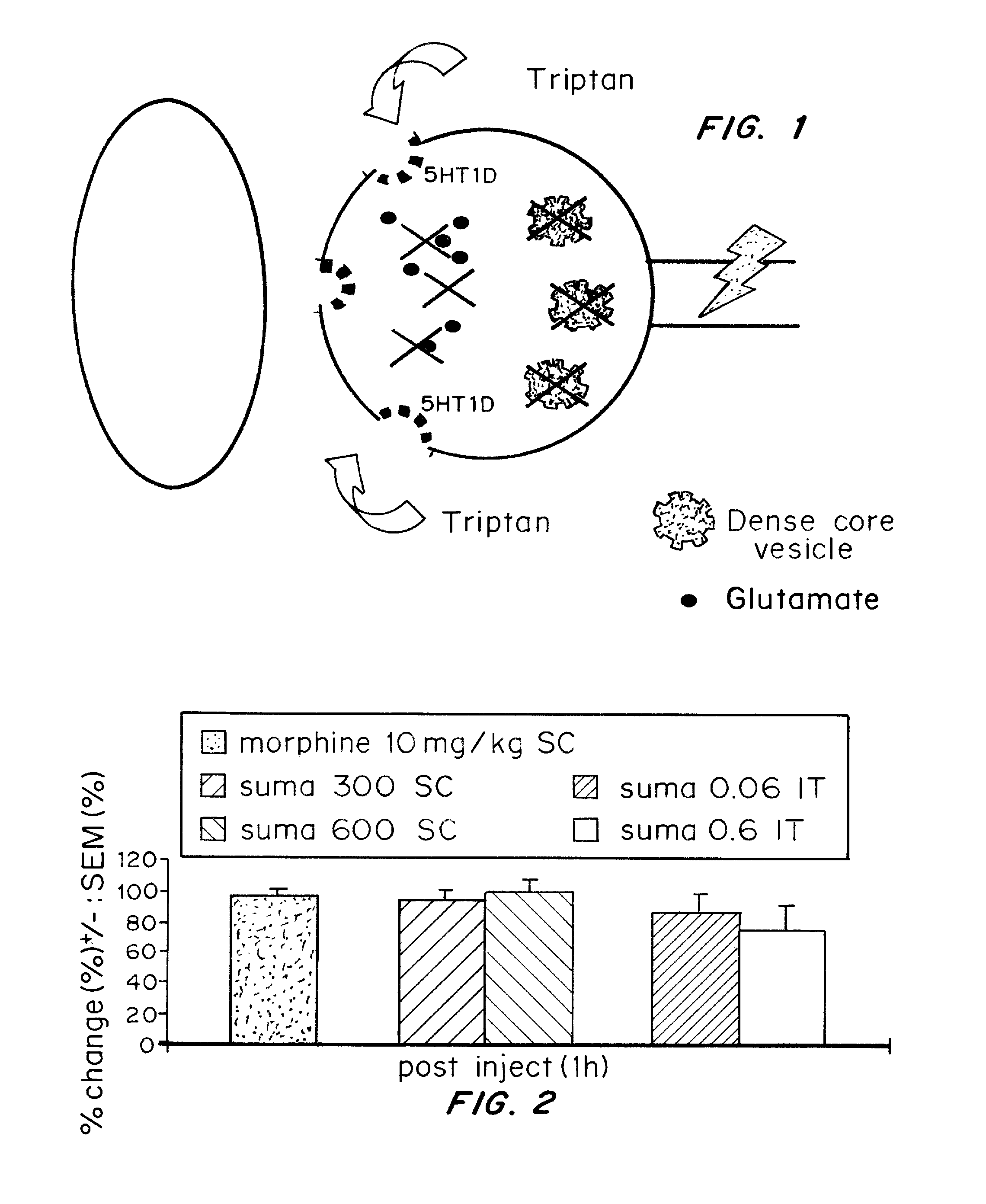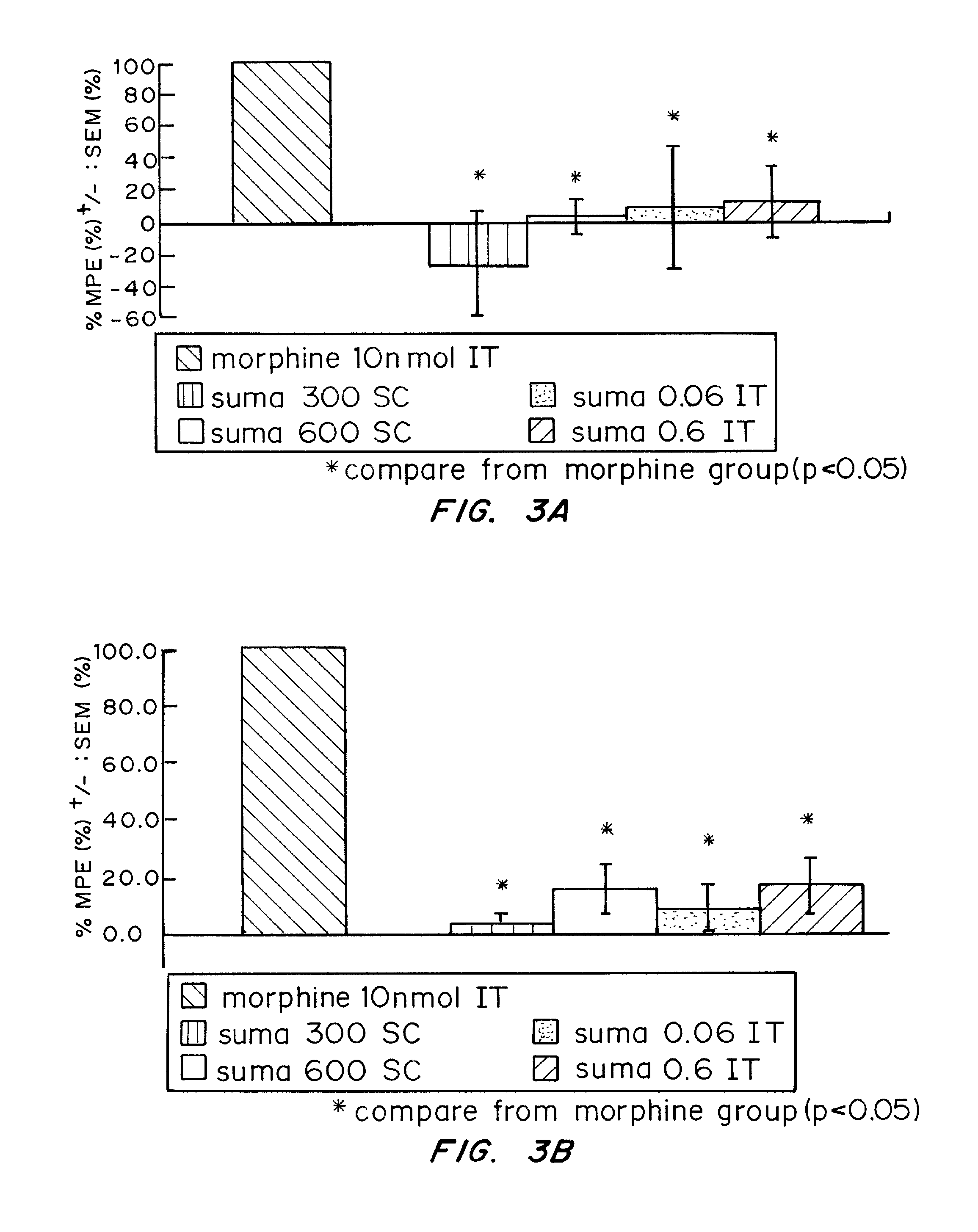Intrathecal administration of triptan compositions to treat non-migraine pain
a technology of compositions and triptan, applied in the field of non-migraine pain treatment with triptan, can solve the problem that sumatriptan was completely ineffective in an experimental model of neuropathic pain
- Summary
- Abstract
- Description
- Claims
- Application Information
AI Technical Summary
Benefits of technology
Problems solved by technology
Method used
Image
Examples
example 1
Tissue Injury Regulates Serotonin 1D Receptor Expression
[0063] Ahn and Basbaum, J. Neurosci. 26(32):8332-8332 (August 2006) reported that the anti-migraine action of “triptan” drugs involves the activation of serotonin subtype 1D (5-HT1D) receptors expressed on “pain-responsive” trigeminal primary afferents. In the central terminals of these nociceptors, the receptor is concentrated on peptidergic dense core vesicles (DCVs) and is notably absent from the plasma membrane. Based on this arrangement, it was hypothesized that in the resting state the receptor is not available for binding by a triptan, but that noxious stimulation of these afferents could trigger vesicular release of DCVs, thus externalizing the receptor. Studies demonstrated that within 5 minutes of an acute mechanical stimulus to the hindpaw of the rat, there is a significant increase of 5-HT1D-immunoreactivity (IR) in the ipsilateral dorsal horn of the spinal cord. These rapid immunohistochemical changes reflect redi...
example 2
Efficacy of Intrathecal Administration of Sumatriptan
[0100] The possibility of an analgesic action of sumatriptan on non-cranial pain, independent of the pain of headache, was examined. 5-HT1D receptors are concentrated within dense core vesicles (DCVs) of the synaptic terminals. It was hypothesized that in the unstimulated state, sumatriptan lacks access to the sequestered receptor and thus should not influence acute pain. On the other hand, acute or chronic stimulation should trigger the redistribution of the receptor to the plasma membrane, making it available to activation by a triptan. To test this hypothesis functionally, the effects of systemic (subcutaneous; SC) or direct spinal (intrathecal; IT) injection of sumatriptan was studied in behavioral models of both acute and chronic pain. The results establish that appropriate targeting of triptans can in fact generate profound relief of pain other than that associated with migraine, including pain behaviors associated with tis...
PUM
| Property | Measurement | Unit |
|---|---|---|
| time | aaaaa | aaaaa |
| time | aaaaa | aaaaa |
| time | aaaaa | aaaaa |
Abstract
Description
Claims
Application Information
 Login to View More
Login to View More - R&D
- Intellectual Property
- Life Sciences
- Materials
- Tech Scout
- Unparalleled Data Quality
- Higher Quality Content
- 60% Fewer Hallucinations
Browse by: Latest US Patents, China's latest patents, Technical Efficacy Thesaurus, Application Domain, Technology Topic, Popular Technical Reports.
© 2025 PatSnap. All rights reserved.Legal|Privacy policy|Modern Slavery Act Transparency Statement|Sitemap|About US| Contact US: help@patsnap.com



